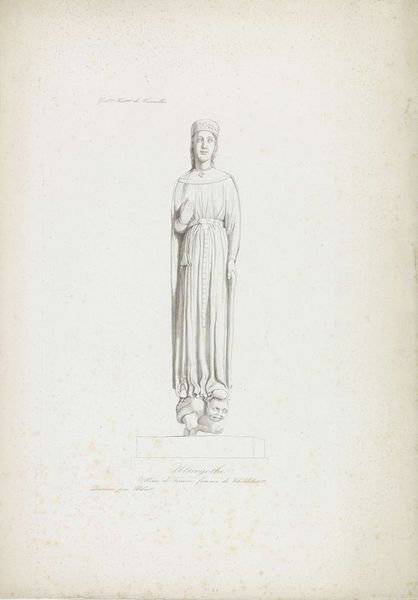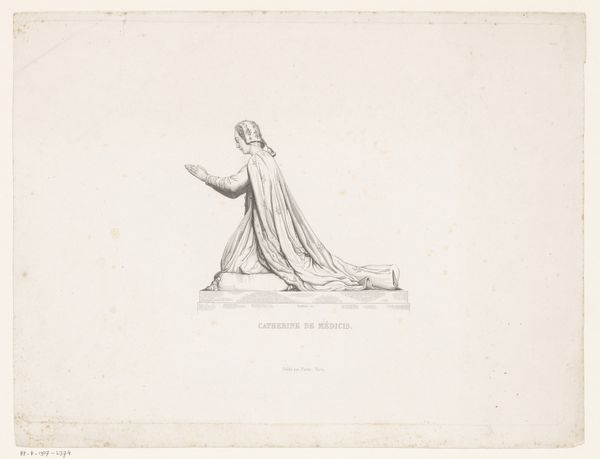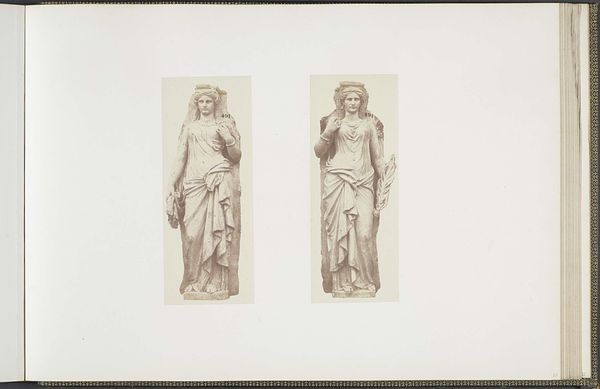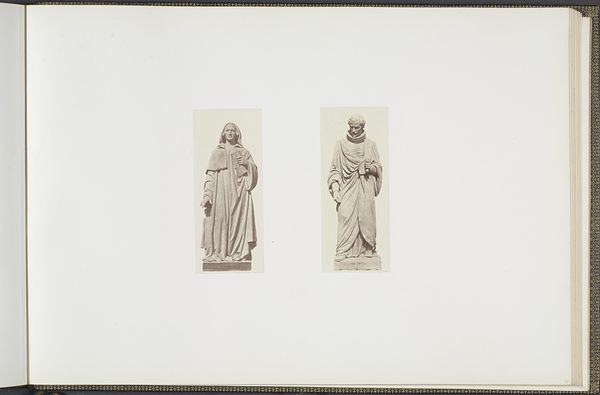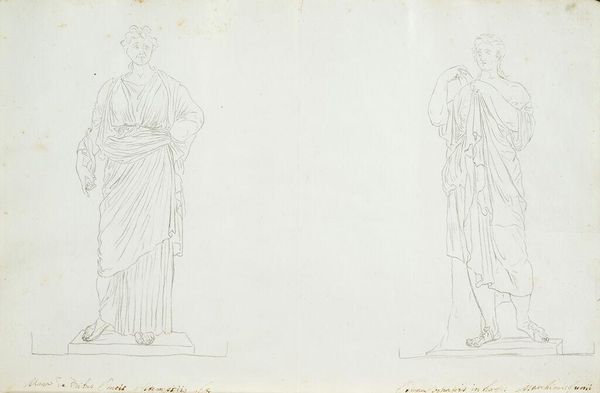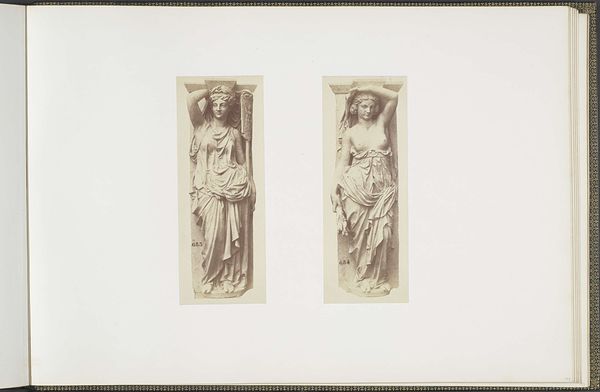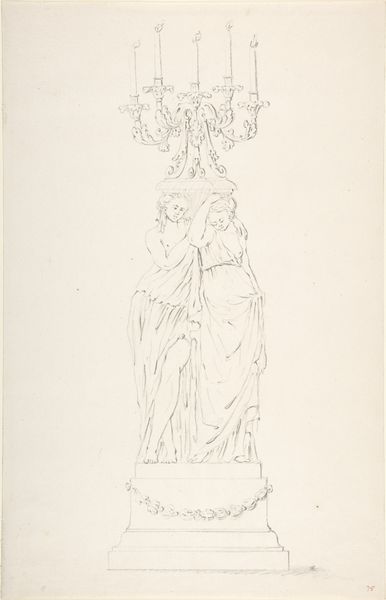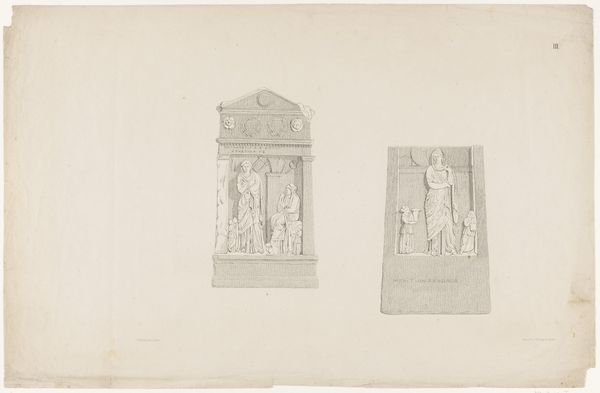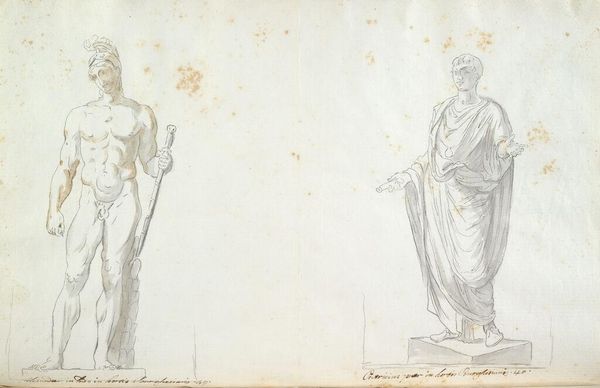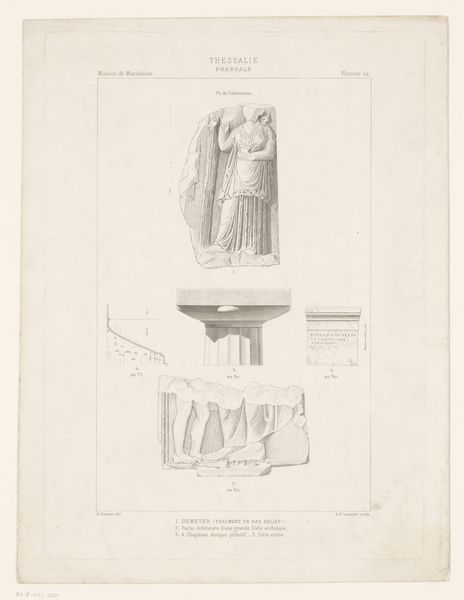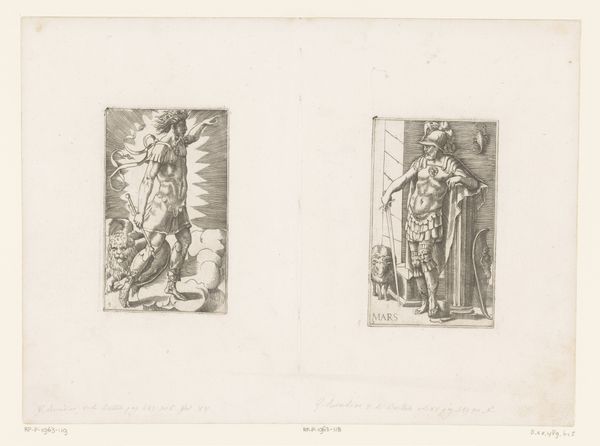
drawing, sculpture, pencil
#
portrait
#
pencil drawn
#
drawing
#
figuration
#
pencil drawing
#
sculpture
#
pencil
#
history-painting
Dimensions: height 265 mm, width 376 mm
Copyright: Rijks Museum: Open Domain
Curator: This is a drawing representing sculptures of Clothilde and Clovis I from Notre-Dame de Corbeil, attributed to Jacopo Bernardi, likely created sometime between 1818 and 1848. The medium appears to be primarily pencil. Editor: They have an almost ethereal quality about them. Stark, simple lines emphasizing the sculptures, while the blank space lends them a weighty quietude. Curator: Indeed. It’s interesting how Bernardi chose to depict these historical figures. Clovis I, of course, was a significant king of the Franks. Clothilde his wife, a pivotal figure in his conversion to Christianity, is a visual tool in royal propaganda of the period. Editor: And consider the artistic labor itself. This wasn’t a quick sketch, but a meticulously crafted drawing, probably a copy. It speaks to the contemporary craft processes and how art was disseminated and understood before mass media. Curator: The act of drawing these sculptures allows the artist, and in turn the viewer, to engage with history. These aren't presented as grand paintings for the elite but, in drawing form, they have been given to a new audience to experience through the print and thus understand. Editor: Notice, too, the delicate shading on their garments. One can almost imagine the textures, the quality of the stone they're likely carved from. The labor of the original sculptors is now replicated through draftsmanship and becomes accessible in a drawing. Curator: And perhaps an increased emphasis on the detail allows the observer to question its function – and to interrogate the narrative in fresh and original ways. The original sculptures would have likely served a specific political or religious agenda. Bernardi's drawing, potentially intended for study or record, becomes detached and more universally valuable as the process unfolds. Editor: It all really pushes one to appreciate how art exists not just as an object of beauty but also as a document of its making, it’s re-making, and its socio-historical moment. Curator: Absolutely. It prompts us to consider the public role art holds, even pieces that seemingly depict a singular story and vision, such as with Clothilde and Clovis. Editor: These images encourage us to think more broadly about the means of art production itself as well as the impact it can have upon us.
Comments
No comments
Be the first to comment and join the conversation on the ultimate creative platform.
